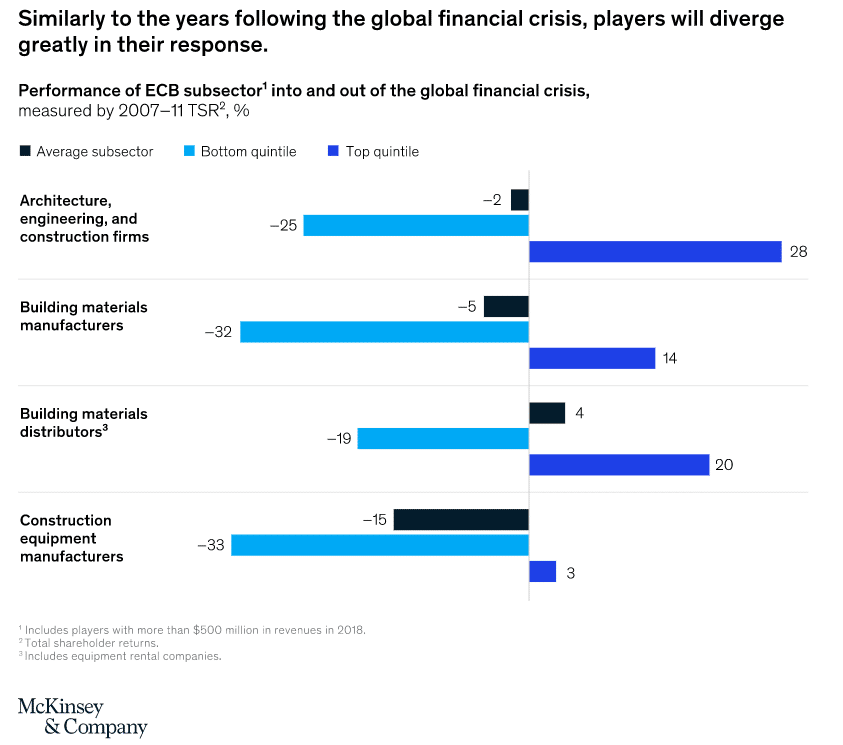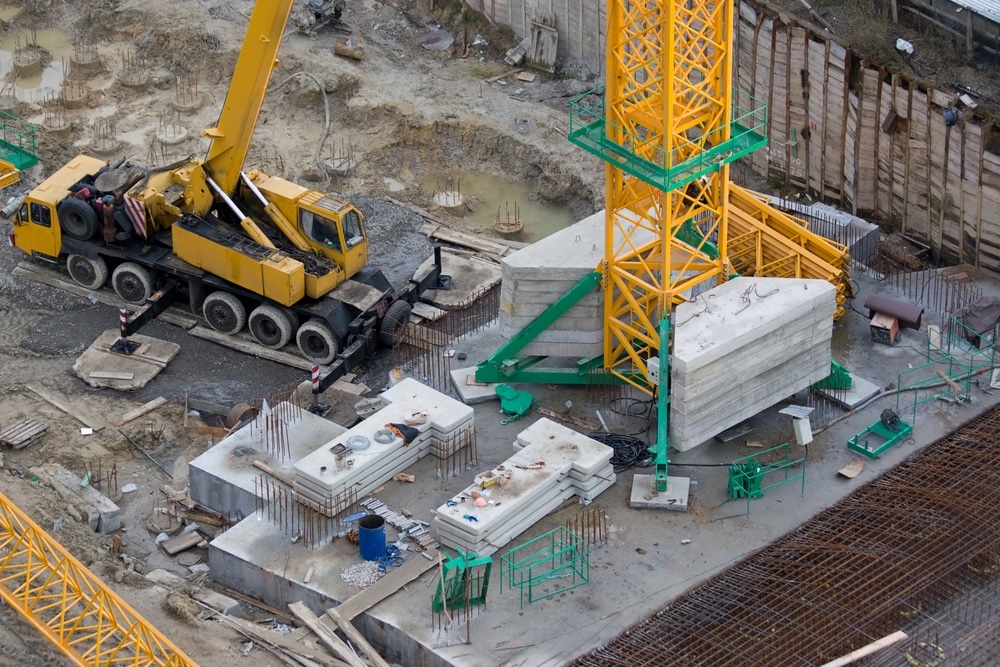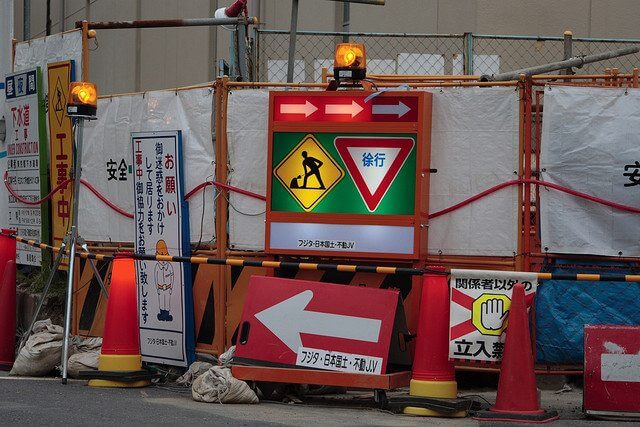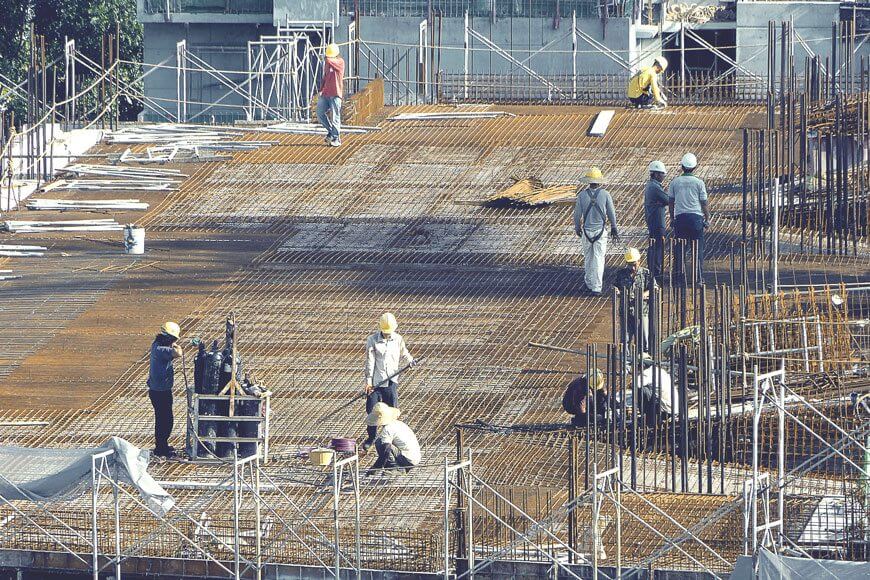These words as expressed by David Philp (Global BIM/IM Consultancy Director at Aecom and Head of B.I.M at UK BIM Task Force) during the recent Virtual Town Hall, organised by LetsBuild, perfectly describe the situation that the construction industry is currently in.
Town Hall on the impact of COVID-19: Watch the discussion here
Like every other industry around the world, construction is suffering the unprecedented impact of the Coronavirus outbreak.
However, with the right mindset and strategy, the sector has a big opportunity to turn something so negative to a catalyst for change. That’s of paramount importance considering the big contribution of construction to every country’s GDP and the crucial role that it holds in our societies.
In the midst of this crisis, it is inspiring to see the initiatives many construction industry innovators have taken to support the battle against the Coronavirus outbreak. Some donate masks (sometimes their entire stock), others offer free rooms for the medical teams to rest near the hospitals and even do their best to open new hospital facilities before the initially scheduled date.
On top of that, we should not overlook that built structures are a core part of our everyday life whether we are thinking of houses, schools, or hospitals.
Taking all that into account, it quickly becomes apparent that construction can’t afford to waste this crisis. It’s time for the industry to accelerate its digital journey to keep up in the future with crisis situations, like the one we experience today. In other words, the next big mission for construction is to find the culture drivers that will unlock a new way of working and communicating. Because normal is no longer a desired state for the industry.
“The more innovative and more investing companies will have a lot to gain. And I think they will. I think the crisis will accelerate transformation and transition. And I think there are open doors by governments all around the world to change things,” said Dr. Jan Mischke, Partner at McKinsey Global Institute during the Virtual Town Hall on how the Coronavirus outbreak is expected to shape the future of the construction industry.
Dr. Jan Mischke is also one of the writers of a very insightful article, published recently by McKinsey & Company, focusing on the ways construction will be able to come back stronger after the Coronavirus outbreak.
Today, we take a closer look at this report in an effort to examine the key trends behind the much-needed shift in construction as well as the factors that will push the industry forward to a new data-driven normality.
Some will handle the crisis better than others
First things first, it is already evident that there will be both leaders and laggers in the industry with regards to their response to the COVID-19 crisis. That is something that we saw again just a few years ago during the global financial crisis.
“As always when you have a downturn in construction it represents both challenge and opportunity. And I think we have to view it in that way, in terms of the choices the businesses have to make,” explained Mark Farmer when he was asked about it at the recent Virtual Town Hall discussion.
And he added:
“Unfortunately, I’m pretty certain we are going to see a return to probably a variety of different behaviours and responses. We are going to see some businesses who just go straight back to survivalist mode and you can’t blame them. Because at the end of the day they are going to be driven by necessity in relation to keeping their businesses going. But that survivalism is gonna be about short-termism, it’s going to be about stopping any potential investment they were making in innovation, maybe even in technology, all of the things that potentially are going to be part of the solution going forward.”
So in many cases, construction players will have to make a choice between investing in their short-term survival or in their longstanding development. This idea is also supported by McKinsey and Company, as seen in the diagram below:

What will construction look like during and after COVID-19?
The Coronavirus pandemic has introduced people to a new reality both in their personal and professional lives. The construction industry is, of course, no exception to that. A new reality is gradually emerging both on the way stakeholders in the sector are going to build but, more importantly, on the way they will collaborate with each other and share critical information.
McKinsey and Company analysed in detail some of the main trends that are expected or have already started to appear in the industry. There are both short- and long-term changes that construction players need to keep an eye on as construction sites reopen and field operations start to speed up again.
In the short term
Starting from the short-term trends that are anticipated to leave their mark on construction, they could be summarised on the following:
Increased support for digital initiatives
More and more construction companies are reinventing their systems and processes and try to accelerate digitalisation. One of the main incentives behind this strong digital shift has to do with their need to support an efficient and straightforward remote-working strategy that is continuously gaining popularity among designers, engineers, project managers, etc. Technologies such as BIM, project management software, and cash-flow apps are expected to take up more space in the industry as we move forward.
Switch of focus for the supply chains
A change in the way supply chains plan for the future has become apparent. Contractors are now prioritising adaptability to efficiency. For instance, they invest in putting together a resilient inventory and collect materials of critical importance to keep their projects protected. Furthermore, many organisations are on the look for alternative suppliers to avoid material shortage in the near future.
In the long term
As far as the long-term effects are concerned, the picture there is still a bit more unclear but there are certainly some worth-mentioning trends that have started to emerge:
Consolidation is gaining momentum
More and more players in construction are looking for consolidation opportunities in an effort to remain competitive and mitigate risk. Further investment in talent acquisition, in technology, and in R&D are also part of this strategic shift.
Focus on vertical integration
As McKinsey & Company points out, an increased number of companies in construction are looking into vertical integration so that they can control cost and risk in a more efficient way. A number of new business models across the industry are anticipated to rise in the near future.
Find out more: How to manage your construction sites during and after COVID-19
Modular construction is becoming stronger
Being able to develop and complete your projects in a controlled environment can be the way to go for many contractors after the COVID-19 outbreak. It’s an approach that continuously gains traction given that it can lead to a standardised way of designing, collaborating, and eventually building. Furthermore, the establishment of better safety measures and regulations becomes easier as a result of operating on a controlled factory-like space.
Increased demand for innovation
As construction sites open up again, contractors need to find ways to keep their field teams working in a safe manner that adheres to the social distancing rules. The McKinsey report smartly suggests that this can add even more pressure to the industry when it comes to the serious skills shortage that construction is fighting against. That being said, bold investments in digital tools are required so that the building process becomes more innovative to support productivity and keep construction projects going despite the imposed restrictions. Automation systems and a more standardised building approach are expected to gain more attention in the next months and years.
Sustainability under the spotlight
During our recent Virtual Town Hall, Dr. Jan Mischke underlined the need both for the governments and the construction industry to look into sustainability:
“We have seen governments invest up to 25% of the GDP to save, let’s say, one million lives. Is it not then fair to believe that we will invest 2% of the GDP to save the environment and 50 million lives?”
More ambitious carbon reduction targets and a general strategy towards healthier living, sustainable materials, and designs that support these concepts will be part of construction’s new dawn.
The key factors for a successful future
All the points described above emphatically show that the construction industry can hope for better days if all players remain ambitious and plan for the long term. The sector can’t afford to waste this crisis and, more importantly, it can’t afford to take its eyes from the bigger picture.
But what will it take for this strategic change to be successful? McKinsey and Company identified seven key factors that could gradually lead to a promising future for construction. In a nutshell, here are the steps that all construction companies who want to succeed need to follow:
- Speed up digital rollout and adoption.
- Focus on building a culture that can support change.
- Come up with an effective monitoring system across projects.
- Invest in the resilience of the supply chain.
- Reallocate resources and funding to support the new vision.
- Explore off-site construction opportunities.
- Connect more with customers.
By following some – or ideally all – of these steps, players in construction have a good chance to bounce back stronger after the Coronavirus outbreak. It goes without saying that it’s a long and demanding process but with the right strategy, culture, and investments a better future for construction is possible.
The transformation will go through leadership
The need for a deep change in construction was more than evident even before the Coronavirus outbreak. Low productivity, a strong culture of blame, a lack of digitalisation, and low margins were composing a very problematic reality for stakeholders in the industry.
In other words, coming up with a new normal was already the key to construction’s future. Some of the most ambitious and innovative players were quick to understand this trend and change the way they work.
But one thing is for sure. There will be some firms that will succeed in this tough mission and some who will eventually fail. No one can predict the future or how things will look at the end of the COVID-19 crisis. Construction is still in uncharted territory and no one holds all the answers.
Nevertheless, by taking advantage of each other’s knowledge and skills players in construction can work together for a brighter future and a sector where there is no space for a “business as usual” culture.
In an effort to help construction thought leaders come together, we hold on May 28th our second Virtual Town Hall where an impressive panel of experts gave a status on the current situation in the industry and what will happen over the coming months: why some companies succeed in overcoming the massive changes and why others fail.
“It’s a huge obligation to everyone involved in not going back to normal,” highlighted Ulrik Branner, Executive and Board Member of LetsBuild, who was the host of this insightful online discussion.
![]()
Ulrik was surrounded by an impressive line-up of panelists:
- Ann Bentley, Global Board Director at Rider Levett Bucknall
- Dame Judith Hackitt, Chair of the Independent Review of Building Regulations and Fire Safety and Chair of manufacturing trade body Make UK (formerly EEF)
- Clare Miller, Group CEO at Clarion Housing Group
- Peter Jackson, Managing Director at Seddon Construction
- Sarah Fox, Construction Lawyer/Owner 500 Words Ltd
All participants agreed that leadership is one of the keys to the transformation and by extension the survival of the construction industry.
“We have to recognise that we are not going to go back as we were before. Those who wait to go back to how it was before are the ones who won’t survive,” explained Dame Judit Hackitt.
Sara Fox agreed with this view underlining that “this is a once-in-a-lifetime opportunity to come out with a new culture.”
In that sense, there is a strong need for resilience and adaptability moving forward. Otherwise, investment in digitalisation won’t be able to solve anything on its own. And this, of course, goes back to leadership.
“When you have leaders in the industry that can stand up for what they believe then you can drive culture change,” noticed Sara Fox.
Furthermore, trust and the way contractual relationships are established are also two areas of paramount importance for construction’s future.
“It’s all about relationships. It’s a code word for trust,” said Peter Jackson and added:
“The companies that fail are the ones that they won’t find a new way of engaging with people.”
From her side, Anne Bentley referred to the need for companies to start paying more attention to value and not only to cost. Now more than ever, stakeholders in construction need to provide services that drive value both to their customers and the society in general. That’s one of the first steps towards survival.
For this deep change of culture to come true, though, the construction industry needs to stop living in the past. As Clare Miller points out, people in the sector need to respect the past but start listening to new ideas and facilitate innovation.
All in all, construction is in front of a big opportunity to change the way the sector operates and bounce back stronger than before. It’s time for strong leadership, more digitalisation, increased quality, and more sustainability.
We encourage you to watch the entire discussion, just by clicking on the button below. You can also watch our first Virtual Town Hall just by clicking here.
![]()




